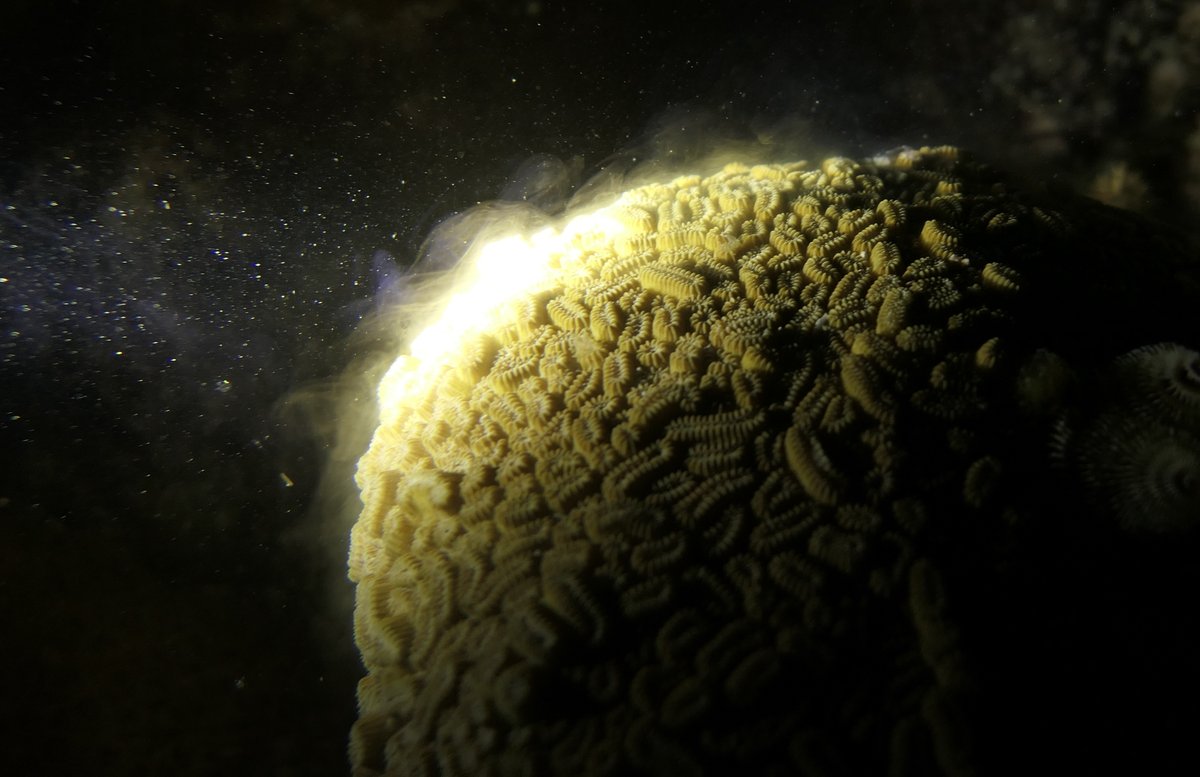The pineapple corals are STILL at it y& #39;all. We discovered when they spawn, but now we can& #39;t figure out when they stop.
This past week, we closed the gap from night -4 to +4 relative to the full moon, leaving 0.0 weeks to just go home and eat dinner. Last night& #39;s nonsense:
This past week, we closed the gap from night -4 to +4 relative to the full moon, leaving 0.0 weeks to just go home and eat dinner. Last night& #39;s nonsense:
Scientists used to assume corals were mostly brooders, because sometimes after collecting a colony, it burped out a bunch of larvae into a bucket. Then they assumed corals were mostly spawners, because a bunch of colonies spawned gamete bundles all on the same night...
Then everyone got a litttttle bit too comfy, because you could either put a coral in a bucket, or go dive for four nights, and yay there& #39;s your field season.
What got neglected was all the weird ones, gonochores, rare corals, deep corals.
What got neglected was all the weird ones, gonochores, rare corals, deep corals.
By focusing on the easy workhorse species, we made a misleading mental cartoon of What Corals Do.
They brood! Or they mass spawn! The end!
They only & #39;do& #39; those two things because we only gave them those two opportunities.
They brood! Or they mass spawn! The end!
They only & #39;do& #39; those two things because we only gave them those two opportunities.

 Read on Twitter
Read on Twitter


